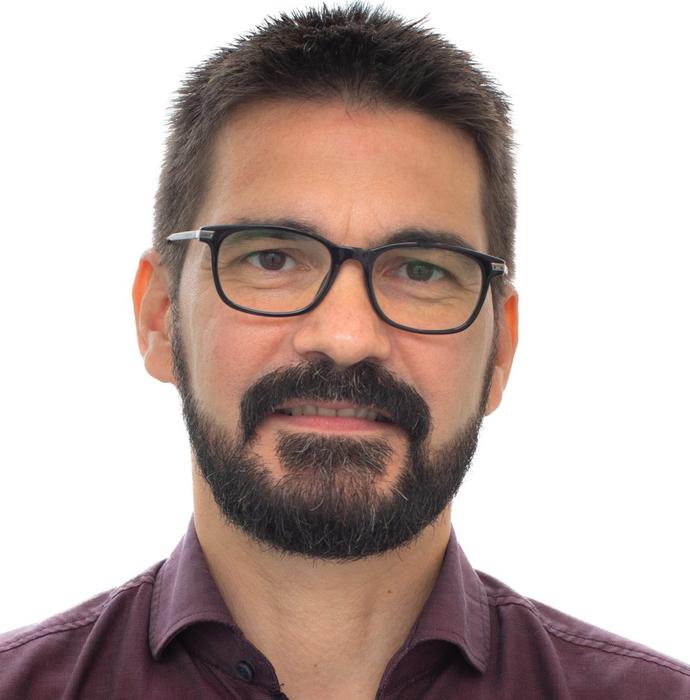Light and nature as valuable allies in the production of molecules essential for our daily lives. This is the horizon envisioned by PHOTOZYME, a new research project led by Paolo Melchiorre, professor at the Department of Industrial Chemistry “Toso Montanari” of the University of Bologna, funded by the European Research Council (ERC) with an Advanced Grant worth 3 million euros.
The challenge is to combine three modern strategies of chemical transformation – biocatalysis, photochemistry, and directed evolution – laying the groundwork for sustainable molecular synthesis, from which new drugs, for instance, can emerge.
PHOTOZYME concludes a trajectory of research supported by the European Research Council over the last 15 years: Professor Melchiorre has indeed addressed these topics with an ERC Starting Grant in 2011, an ERC Consolidator Grant in 2016, and an ERC Proof-of-Concept Grant in 2019.
“The peculiarity of this project is the introduction of light, and therefore photochemistry, as the activating element of biocatalysis, which uses enzymes as true biological catalysts, capable of orchestrating chemical reactions with surprising precision and efficiency,” explains Melchiorre. “Through illumination with visible radiation, enzymes are stimulated to a higher energy level, paving the way for new radical reactions and a wide range of synthetic opportunities.”
The goal, in short, is to develop new photobiocatalytic tools to convert basic and readily available chemical substances (such as fatty acids) into chiral molecules, thus with a well-defined three-dimensionality, usable for various applications.
To further enhance these catalytic capabilities, directed evolution is added. This third ingredient of the PHOTOZYME project uses an engineering process to subject enzymes to a sort of “training,” making them more suitable and efficient in carrying out specific molecular reactions promoted by light.
“The use of light will allow programming completely new catalysis mechanisms within enzymes, enabling them to catalyse processes completely different from those for which they have evolved,” concludes Melchiorre. “This not only expands their range of use but also introduces the possibility of developing innovative synthesis pathways for molecules of interest, for example, for the creation of new drugs.”

Credit: University of Bologna
Light and nature as valuable allies in the production of molecules essential for our daily lives. This is the horizon envisioned by PHOTOZYME, a new research project led by Paolo Melchiorre, professor at the Department of Industrial Chemistry “Toso Montanari” of the University of Bologna, funded by the European Research Council (ERC) with an Advanced Grant worth 3 million euros.
The challenge is to combine three modern strategies of chemical transformation – biocatalysis, photochemistry, and directed evolution – laying the groundwork for sustainable molecular synthesis, from which new drugs, for instance, can emerge.
PHOTOZYME concludes a trajectory of research supported by the European Research Council over the last 15 years: Professor Melchiorre has indeed addressed these topics with an ERC Starting Grant in 2011, an ERC Consolidator Grant in 2016, and an ERC Proof-of-Concept Grant in 2019.
“The peculiarity of this project is the introduction of light, and therefore photochemistry, as the activating element of biocatalysis, which uses enzymes as true biological catalysts, capable of orchestrating chemical reactions with surprising precision and efficiency,” explains Melchiorre. “Through illumination with visible radiation, enzymes are stimulated to a higher energy level, paving the way for new radical reactions and a wide range of synthetic opportunities.”
The goal, in short, is to develop new photobiocatalytic tools to convert basic and readily available chemical substances (such as fatty acids) into chiral molecules, thus with a well-defined three-dimensionality, usable for various applications.
To further enhance these catalytic capabilities, directed evolution is added. This third ingredient of the PHOTOZYME project uses an engineering process to subject enzymes to a sort of “training,” making them more suitable and efficient in carrying out specific molecular reactions promoted by light.
“The use of light will allow programming completely new catalysis mechanisms within enzymes, enabling them to catalyse processes completely different from those for which they have evolved,” concludes Melchiorre. “This not only expands their range of use but also introduces the possibility of developing innovative synthesis pathways for molecules of interest, for example, for the creation of new drugs.”




